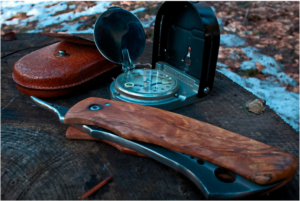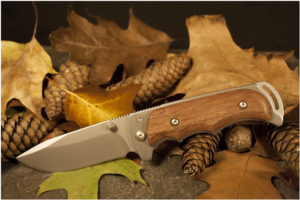 A survival knife can be used for so many things and there are various types of knives available that are excellent for survival situations. Tactical knives, pocket knives, swiss army knives, and many others can be very useful for everyone such as hunters, hikers, and guides. Deciding on the best knife can be hard as there are so many choices, but if you buy a quality knife, it will last a lifetime. It is so important that you consider everything from the blade to the weight before you part with your money.
A survival knife can be used for so many things and there are various types of knives available that are excellent for survival situations. Tactical knives, pocket knives, swiss army knives, and many others can be very useful for everyone such as hunters, hikers, and guides. Deciding on the best knife can be hard as there are so many choices, but if you buy a quality knife, it will last a lifetime. It is so important that you consider everything from the blade to the weight before you part with your money.
To help you make the right choice, here are our expert tips for buying the right survival knife
1. The Style of Knife
The first thing to decide when buying a survival knife is what kind of style you want. Survival knives can come in ultra-sleek military-grade metals or in more traditional styles and materials like hardwood and polished brass. Both styles are very robust and will definitely get the job done but military knives are designed purely for performance whereas classic survival knives are also designed to be more elegant collector’s items. The folks at https://bestsurvival.org/ explain that when buying any kind of survival gear, you can’t go wrong by investing in military equipment. This has been specially designed to perform in the most extreme conditions so it should always be up to whatever challenge you have in store.
2. The Blade Point and Edge Type
The blade is, of course, the defining part of any knife, but for a survival knife, it is particularly important. After you have decided on a military or traditional style, you will need to give the blade some serious consideration. The two main elements of the blade to look for are the point and the edge. There are drop point blades, clip points, spear points, straight points, and tanto points. All can be used for a variety of survival techniques so it is worth trying a few out to see which you like best.
Perhaps even more important than the point is the edge of the blade. You will need to decide between a straight edge or a serrated edge or choose a blade that has both. Military knives are great because they have a straight edge with a serrated section so you get the best of both worlds. There are also a range of blade shapes such as hawksbills and bowies so you have a lot to consider when choosing the blade. Our tip is to always go for performance over looks and this is true for everything in your survival kit bag.
3. The Handle’s Grip
When it comes to putting performance over looks, choosing the right handle is crucial. It is so important that you choose a handle with an excellent grip so that the knife doesn’t slip dangerously in your hand when you use it. The handle should feel comfortable in your hand and there should be enough space between the blade and your hand so that you can use it safely. Handles come in metals or woods but the only factor you should be concerned about is how the knife feels and can you use it comfortably.
4. The Weight of the Knife
It doesn’t matter if you are buying a knife for survival or for the kitchen, the weight of the knife should be a major factor in your choice. If the knife is too light, it will require too much force to use it, whereas if it is too heavy, you won’t be able to handle it very well. You should check the balance of the knife by holding it in your hand. You want a knife that has the perfect weight ratio between handle and blade as this will provide the best performance.
5. The Price of the Knife
After you have looked at all of the above points, you can then narrow your selection down based on your budget. The price of survival knives can vary a lot depending on the brand, the design, and the materials used. It is important to note, however, that a quality knife will last you decades so it is often worth spending that little extra.
 Choosing a survival knife can be easy if you look at each element of it systematically. The most important things to consider are the blade and the feel of the knife in your hand as these will ensure that the knife performs as it should. Once you have these two things settled, the style and price are necessary afterthoughts. Follow this guide and it will help you to choose the best knife for your survival needs.
Choosing a survival knife can be easy if you look at each element of it systematically. The most important things to consider are the blade and the feel of the knife in your hand as these will ensure that the knife performs as it should. Once you have these two things settled, the style and price are necessary afterthoughts. Follow this guide and it will help you to choose the best knife for your survival needs.

